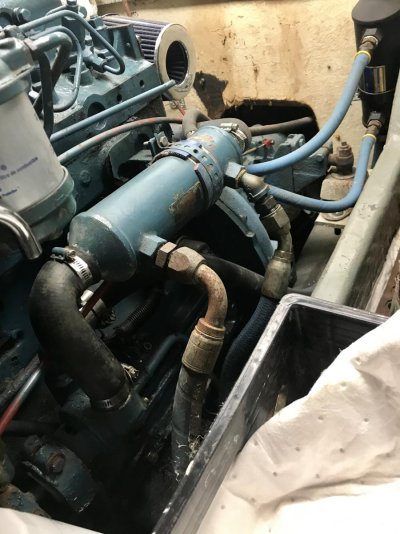FOG
Guru
I am about to re-install my heat exchanger on my Perkins 6.354 when I noticed that the raw water flow direction didn't seem logical to me.
My raw water flow is from the strainer to the raw water pump to the trans/engine oil cooler to the heat exchanger and out the exhaust.
What makes more sense to me is having the heat exchanger before the trans/engine oil cooler. The heat exchanger has an end cap the can be easily removed allowing removal of any impeller bits or other debris in the system.
Am I missing something?
Is there a good reason to have the trans/engine oil cooler first in the flow?
Does your Perkins 6.354 have the same flow?
My raw water flow is from the strainer to the raw water pump to the trans/engine oil cooler to the heat exchanger and out the exhaust.
What makes more sense to me is having the heat exchanger before the trans/engine oil cooler. The heat exchanger has an end cap the can be easily removed allowing removal of any impeller bits or other debris in the system.
Am I missing something?
Is there a good reason to have the trans/engine oil cooler first in the flow?
Does your Perkins 6.354 have the same flow?


